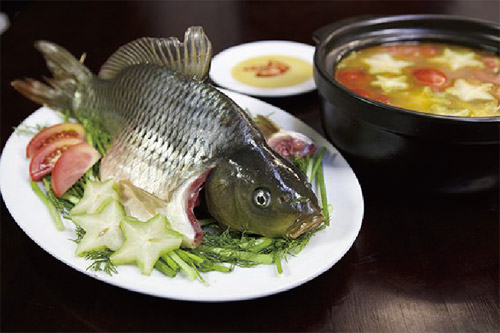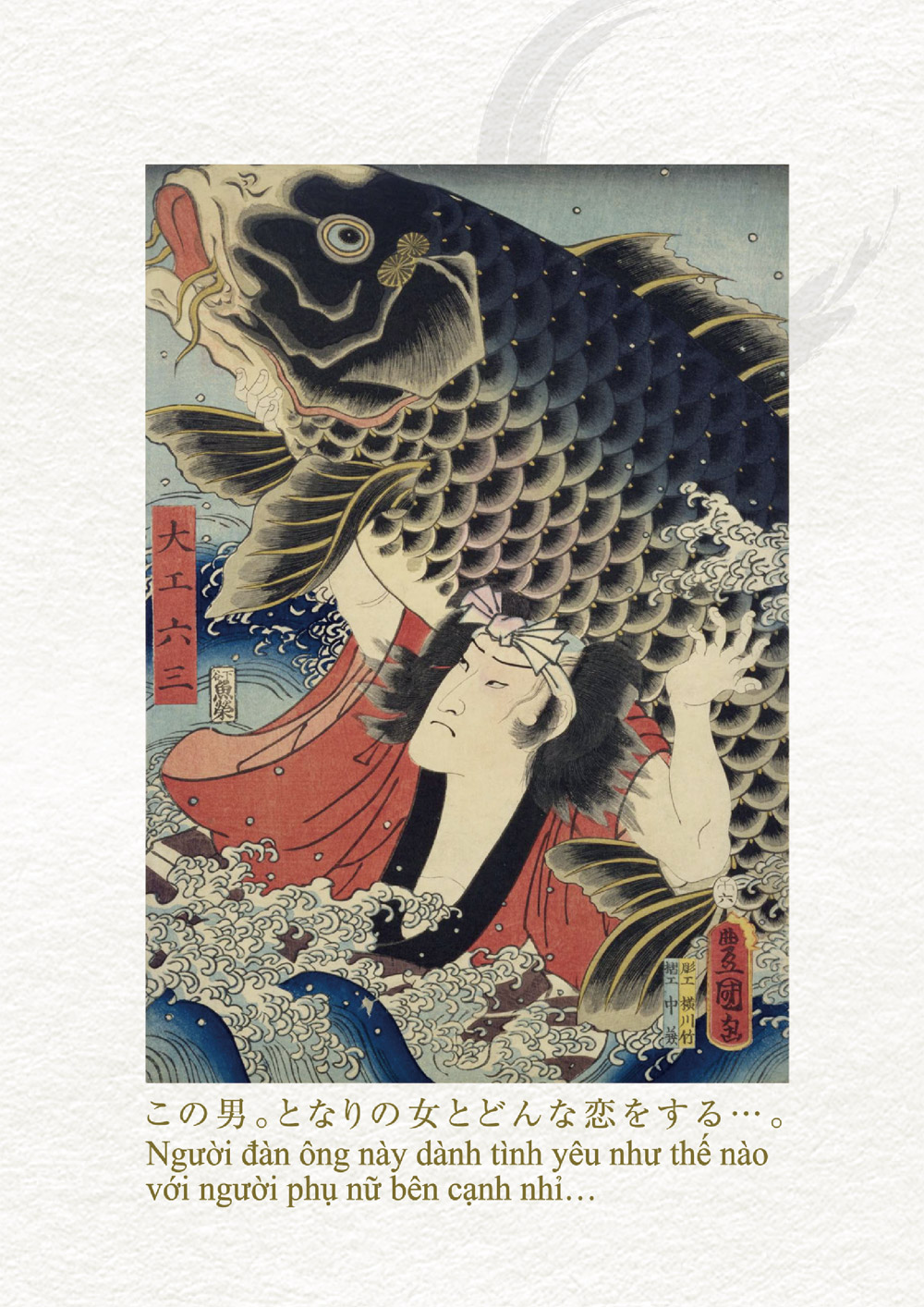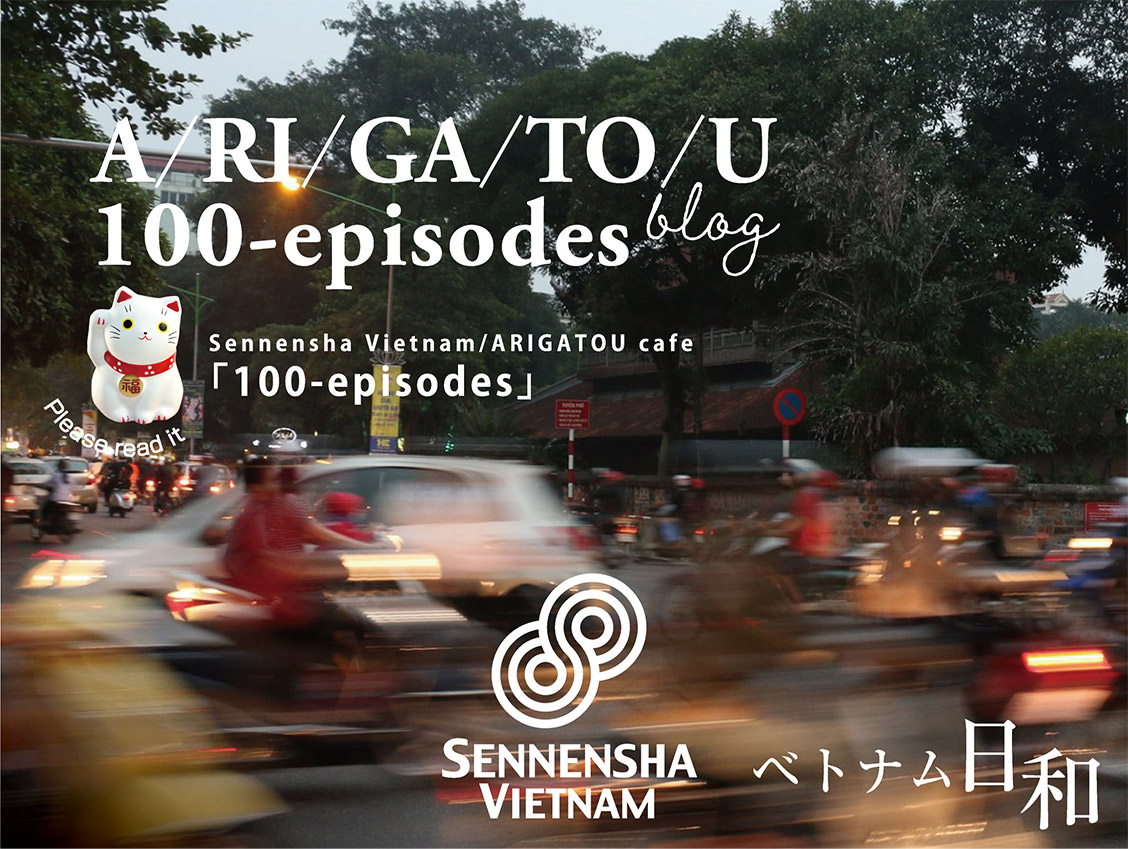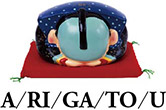episode-11
Only one in Ha Noi.
A special space and moment just for you.
In the cafe, pictures are displayed as a way to introduce Japanese culture.
Many of them are famous paintings that any Japanese person would know.
We obtained permission from the copyright holder and borrowed the film. We also paid
for the using of the pictures.
After the plate-making of the film, we made a single printed matter. I ask a person who
bound Japanese paintings to do this and brought it to Ha Noi.
The house we are renting for the cafe is once or two times bigger than a Japanese
house. They are probably influenced by Europe.
So, there is a large space on the wall to hang pictures.
If the painting was the same size as the real one, it would be too empty. In order to
accommodate the Vietnamese visitors, the paintings are displayed in a larger size.
We created and attached an explanation, put them in the album so that people can pick
them up and read.
The description text is arranged in a unique way by ARIGATOU Cafe.
Introducing the annotations in the commentary books found in Japan doesn't make
much sense. I also have a lot of thoughts deciding what kind of pictures to display.
Will pictures and descriptions “make sense” to Vietnamese customers?
For example, this ukiyoe painting of a man. Here is the description.
Handsome guy from 160 years ago?
Koi is a freshwater fish that is very familiar to both Vietnam and Japan.
There is a park near the ARIGATOU Cafe.
When I go out for my morning walk, there are always Vietnamese women selling carp at
a certain place.
Everyone is so energetic.
They are chopping a large carp into pieces with a knife, with a, “Bam! Bam!”
Whenever we meet, we greet each other with, “Xin chao”, so we are familiar with each
other now.
Everyone was hard at work from the morning. Carp must have been an indispensable
fish for the Vietnamese people as a source of valuable protein.

Look at the picture.
There are many famous carp dishes such as ‘ca kho – stew fish’, ‘ca hap – steamed fish’
and ‘lau ca – fish hot pot’.
When eating steaw fish on Tet holiday, not only Vietnamese people, but even Japanese people can't help but exclaim that "so delicious".
In Japan, there is a phrase,
‘Koi no takinobori’ [Carp climbing a waterfall].
I think the term probably came from China.
A lot of koi try to climb towards the waterfall.
It seems that only a few Koi can go up the waterfall
after many attempts.
Still, the carp does not give up and continues to
challenge.
For this reason, in Japan, the term
“Koi no takinobori” has become a metaphor for “success in life”.
Please look at the picture.
It depicts a man catching and lifting a giant carp.
The face of the man who jumped into the river to catch the giant carp climbing up the
waterfall, it’s a surprisingly huge carp, has a proud look that says, “How do you like it?”
A man's courage to jump into the river and his struggle with carp.

Actually, there are no such giant carp in Japan.
This is an exaggeration by Toyokuni, the ukiyoe artist who painted this picture.
By drawing the carp in a large size, the picture becomes specular and dramatic.
160 years ago, when Japanese people saw this picture, they thought, “Cool!!”,
“I want to be a man like him.”
The man in the painting who jumped into the river is a carpenter, who was everywhere
in the Edo period. His name - Rokusan, is written on the left side of the picture.
The fact that the carpenter was so familiar to Japanese people at that time probably
inspired people eager to become like him.
160 years ago, a young man from Vietnam may have dived into the Song Hong River in
Hanoi, wrestled with a giant carp and lifted it up with a shout like, "Eek!"
Let's see how handsome he was.
There is an ukiyoe of a woman next to the man. Please read the description.
This is the beauty of 100 years ago.
This would be a popular celebrity poster today.
“Standing like paeonia lactiflora, sitting like paeonia suffruticosa and walking like lily.” This proverb is very famous in Japan.
Beautiful women are symbolized as flowers.

In Vietnamese, paeonia lactiflora flowers are called “hoa thuoc duoc”, paeonia
suffruticosa flowers are called “hoa mau don”, and lily flowers are called “hoa ly”.
 The same flower can be found in Vietnam.
The same flower can be found in Vietnam.
See the photo on the left.
When standing, it looks like the picture in A.
When you are sitting, it looks like picture B.
When walking, it looks like picture C.
What do you think?

Look at the picture on the wall of the cafe.
It shows a cold peony (hoa mau don) and a lily flower (hoa ly) in front of a beautiful
woman.
The picture is composed on the premise of the "proverb" explained earlier.
In addition, behind the proverb, there are plum trees with red and pink flowers.
In Japan, the plum blossom is considered to be the flower that heralds spring.
Beautiful women wear a collar. When it is extremely cold, I think of the plum blossoms that herald in spring.
In the language of flowers the meaning is elegant, noble, patient, and faithful.
The plum blossoms also show the mentality of this beauty.
The ultimate beauty of a hundred years ago. Her eyes, nose, small lips and tied hair
around her forehead are very shiny..
The red hairpin is very striking.
Every month, the ARIGATOU Cafe receives a fashion magazine that is released in Japan.
Many models representing the current beauty of Japan are featured in the magazine.
Why don't you take a look and compare?
While looking at the two pictures...
A lovely Vietnamese woman drinks tea at the ARIGATOU Cafe.
While looking at the two pictures...
Vietnamese couples can spend a moment together while eating kakigori.
While looking at the two pictures...
A young Vietnamese man is lost in thought.
I wish I could provide such a time…
Not only to provide products, but also to provide a place where people can spend their time. What kind of space can we provide?
ARIGATOU Cafe is always thinking about it.






 Prev
Prev
